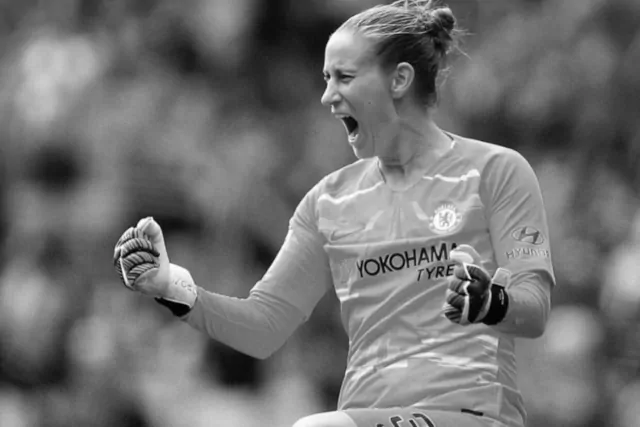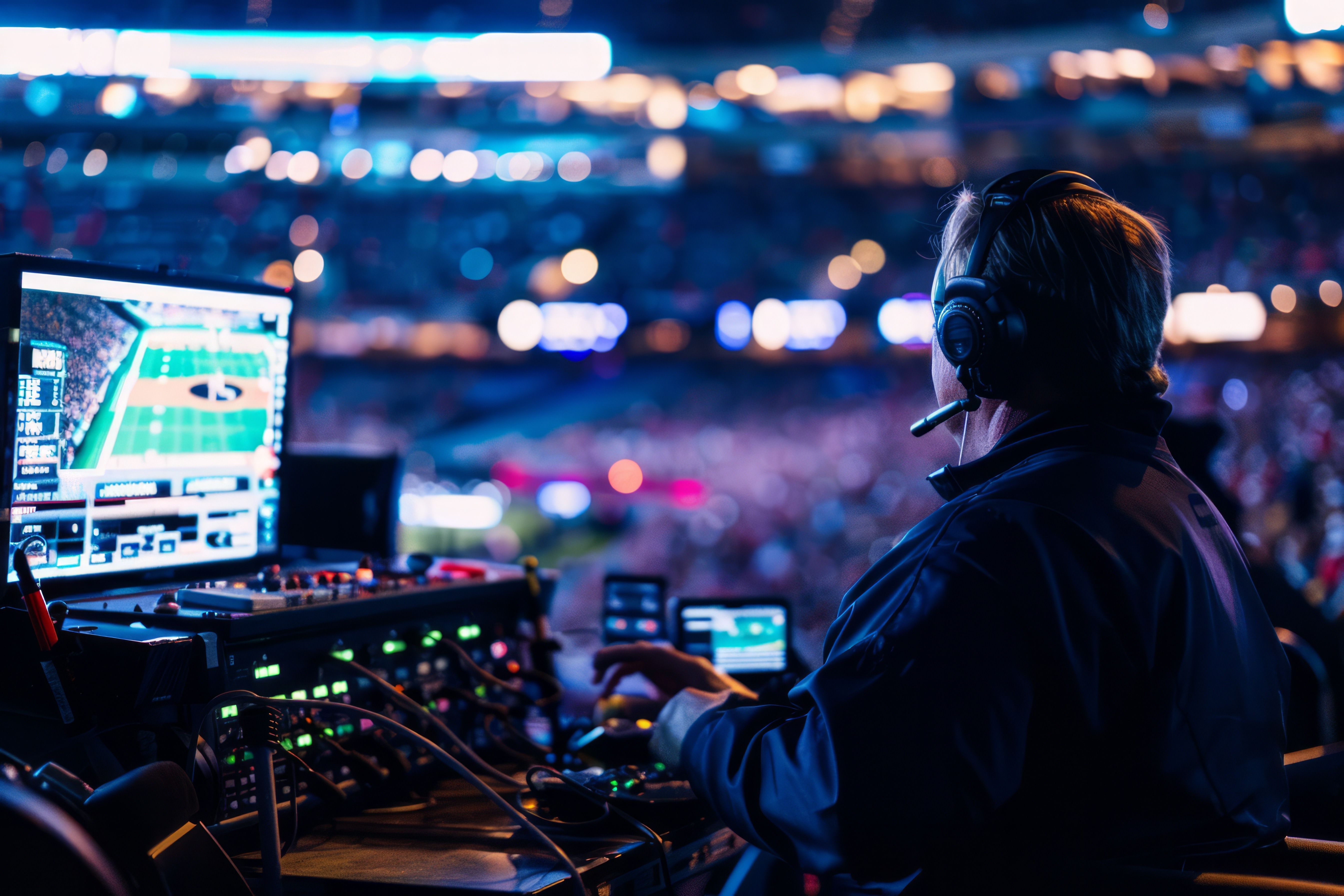Introduction
Nothing focuses the mind like a big game. But it’s not just the players who need to respond. Charged with engaging, encouraging and rewarding thousands of fans, a sporting brand’s social media team has its hands full from sun up to game over. So what are the challenges of managing sports social accounts and how can matchday workflows be improved?
Nobody doubts the commitment of sports stars, athletes and backroom staff as match day approaches. Physical and mental preparation, strategy, practice - they all come together on the day with the aim of getting the best result. But while athletes and managers focus on track or field success, clubs, leagues and sponsors need to leverage sporting achievement into revenue and growth. This means looking beyond traditional ticket sales and broadcast revenue. Today’s stars, clubs and teams are just a click away from a global digital market of sports fans. Social media facilitates closer access, supports conversations and communities, and offers sporting brands new opportunities to connect, engage and grow.
Big sporting brands know that social media isn’t about broadcasting stale updates to occasional followers. In the passionate world of sports, social media provides a platform to build loyalty, drive engagement and encourage advocacy. According to the Stats Perform Fan Engagement Report 2021, 72% of respondents expected to invest in new digital technology going forward, while 53% believe there is a growing opportunity across social channels to respond to demand for always-on content.
Effectively managing that social content - ensuring it’s timely, relevant and shareable - is an increasingly critical role, yet it can be complex and challenging. On matchday, even more so.
- The immediacy of matchday demands vastly accelerated workflows, so content (from build-up
to end-of-the-day analysis) needs to be mapped out in advance. - Different content (video, graphics, UGC) works best at different times of the day
- Different social media channels require specific content optimisations (e.g. image sizes, video aspect ratios, clip length, etc)
- During a match, when demand is huge, there’s little room for error
- Social media strategies need to be fluid with quick and easy access to a content library, so that teams can adapt to unexpected events
- Asset-sharing between team members also needs brands are using outdated or inefficient tools
We spoke to several social media managers on the live sport frontline to see how they manage these demands and how organising content and having easy access to it is crucial.
The opportunity
Social media lets sporting brands engage on a scale that simply wasn’t possible 15 years ago. On Facebook, almost 75 million people like Manchester United. On Twitter, @FCBarcelona has 39.5 million followers. Serena Williams has more than 14 million Instagram followers, and Lewis Hamilton more than 27 million.
Social presence extends beyond major teams and stars to sponsors - Nike can claim billions of YouTube views. The 39 million NBA followers on Facebook show there’s huge interest in leagues, too. Even collegiate and varsity teams have a huge reach: Ohio State Football has 793,000 Facebook likes, Auburn Tigers a cool half-million.
With massive audiences of switched-on fans looking for sporting content, brands have the opportunity to reinforce their values, stimulate discussion, and seed widely shared threads. But everything depends on having timely, relevant, high-quality content ready to go.
The challenge
Populating social channels with stimulating, authoritative and distinctive content means you need a well equipped production workflow. Often this involves external and agency expertise, with multiple stakeholders going through rounds of iteration and approval. Hitting the right notes on the right channels relies not only on good content and a talented social team, but on a mastery of style and format - your Twitter audience might not be into your three-minute behind the scenes film, while the Facebook crowd may lap it up.
For sports brands, however, the challenges are more acute. Timing, as well as responding to match-day events first, is critical. It's why alongside opportunities for evergreen and planned-in content, the immediacy of matchday demands vastly accelerated workflows. With fans looking to clubs and stars as an authoritative source, teams and leagues don’t have days to iterate. And during the match - when the demand is huge and instant - brands need to move fast if they’re to steer the conversation, close down rumours, or simply make the most of an opportunity.
“We use a variety of content on match day,” explains Mark Pryde, former social media & digital manager at Scottish Rugby Union. "[We include] video, graphics, photography and user-generated content (UGC).
During the match itself we’ll usually focus more on updating fans, rather than entertaining.”
The world of Esports has similar content challenges. As William Gleadall, Social Media Executive at the British Esports Association explains: “Our match day content consists of looking back at last week's matches (with highlights from the previous week), explaining upcoming matches for the day, individual scorecards for each match just before they start, followed by coverage
[and updates] across Twitter."
This need to update, and to be quick about it, places workflows under severe pressure. Photographers and videographers need robust platforms to upload their work. Editors need immediate, easy access, while the social media team itself needs to understand what’s happening, what’s available, and where the approved assets are going to be.
CROWDS, COVID - AND WHAT COMES NEXT
The pandemic lockdowns and social-distancing measures, dealt sports a bitter blow. Starved of ticket revenue, and often unable to compete at all, teams were dependent on social channels and archive content to engage fans.
Leagues and broadcasters moved quickly, plugging the gap with vintage tournaments drawn from their archives. Some of the most innovative offerings repackaged existing content in a social wrapper. Associations like the International Cricket Council created Facebook ‘watch parties’ as a way to recreate the immediacy of live content.
In truth, many of these initiatives during the pandemic reflected sporting organisations' ongoing journey from rights holders to broadcasters. Crowds might since have returned to stadiums and venues, but the pandemic has left a legacy of accelerated investment in the tools to integrate content and social workflows.
THE REALITY
In reality, sports brands have different budgets, and cover social channels and events in different ways. But the rewards can be huge. Game-changing, even. For example, social media posts by @olympics across TikTok, Instagram, Facebook, Twitter and Weibo generated 3.7 billion engagements during the delayed Tokyo 2020 Olympics.
So what does a typical social media setup look like? Day-to-day, content production can mirror what you'd expect to find in other major brands. Posts and their supporting assets can be planned ahead, with some capacity for fast-moving and topical updates factored in. There's time to fully proof text, and finesse media assets. Updates, mini-documentaries, highlights packages and the like can all be assembled, perfected and scheduled.
Some brands reflect this in their preparation for match day itself, pre-planning and scheduling posts to reduce the workload on the day.
Interest and attention on the day peaks with the live action and immediate aftermath. According to recent data, 52.6% of sports fans in the US use their mobile device to check social media updates while watching or listening to a sporting event.
But while live action can’t be planned in the same way, it can be planned for. “We tend to map out content a few days prior to the game,” adds former Scottish Rugby Union's Mark Pryde. "This allows us to make sure we have people in the right places at the right time (for example, players arriving) and ensures we aren’t missing anything out such as partners’ content.”
KICKING OFF!
The build up to an event or match is where it all begins to really kick off. In ideal circumstances, careful planning facilitates the smooth capture of live news, video and photo content, and fast editing and production workflows. Speed is essential. Arguments might rumble on for weeks about offside decisions, contentious line calls - or whether Lewis drove into Max. But fans’ appetite for footage or photos is never higher than in the immediate aftermath.
What kind of workflows do brands use to satisfy this demand? Reflecting the importance of tone of voice, a surprising number rely on one team member to craft live messages on the day. According to Mark Pryde: “We’d normally have one person stationed at their laptop, with videographers and photographers roaming the venue and sending content in. Our media and comms team are also important in providing us with updates on injuries, and giving us a direct line of communication with management and the players.”
Whatever the subtleties, brands - like other broadcasters - often employ this spoke and hub model for live events. Unlike direct on-the-scene updates from multiple correspondents, a centralised model offers better planning, consistency and control. With secure and controlled access to a well managed, meta-tagged archive of content, creative teams have everything they need to support live events, including the ability to speedily pull up old footage to enhance new coverage. But at the same time, broadcast workflows require a robust system for submitting and sharing rich media files that might run to gigabytes in size.
In fact, the need to quickly move large media assets such as videos is one of the biggest headaches on matchday. "[An] issue that all sports teams have is sending large video and photo files between each other during the match,” explains Mark Pryde. “You need to move quickly, which can be hard when you have to wait for files to upload."
Surprisingly, given the importance of quick and easy asset sharing during the game, many sports brands are yet to invest in purpose-designed tools such as a digital asset management (DAM) platform. "We use both Dropbox and WeTransfer,” confided one manager.
While freemium platforms can shift files about, they don't offer the resilience and management features that can be invaluable to teams working under pressure. A web upload portal is great, but it’s best if it also lets team members add metadata and comments. Where there’s editing to do, a platform that supports versioning helps avoid confusion. And where there’s sign-off to be gained, built-in support prevents the nightmare of off-brand, pre-production or substandard content dropping onto a couple of million smartphones.
Another concern is the extremely high value of sports IP, particularly when it comes to live and near-live footage. When staff share content via personal accounts on freemium services, it’s hard to limit and track who has access. A breach during the big game could do more than enrage other rights holders - it could leak high-value content into the public domain, slashing its lifetime value.
GETTING THE TEAM ONSIDE
But bespoke content management systems do exist, and many sports brands use them to avoid the common pitfalls of live social content production. In particular,
a DAM platform such as Imagen contains all the features necessary to ensure the security, speed and accuracy of content during the buildup, duration and aftermath of a huge event.
The International Cricket Council now manages their content pitch-side with the help of Imagen Go and Pro, enabling their creative teams to quickly distribute footage to partners, sponsors, licensee, and fellow teams. This ‘live’ aspect is crucial, as staff need the ability to access the content in their editing platform, build compilations and share material at the event, from rushes to posting on social media. Speed is also essential.
Built with high-availability cloud services, Imagen Go is first and foremost a secure repository for media files and other assets. It’s designed to handle the fast and reliable uploads and downloads of huge files such as 4K video, at a stroke improving the reliability and speed of content sharing among the matchday team. Crucially, it offers far more powerful control and security than a typical file sharing solution: assets are encrypted in transit and at rest, while team and individual access can be granted according to users and projects.
Imagen is designed to support and enhance collaborative workflows. Rather than store assets separately to team discussions around their edits, content or revisions, comments are brought into the asset platform and the very centre of the media workflow. Videographers can flag up the exact moment of a crunching tackle, for example, and team members can highlight swearing or fan gestures that might need to be muted or blurred.
THE HEAT OF COMPETITION IS NO TIME TO BE SCRABBLING AROUND FOR THE RIGHT FILE.
Imagen has multiple features that accelerate edit, review and approval cycles, and help ensure the people posting on social channels use the right assets. Inbuilt version control replaces improvised file naming protocols with proper iteration management - so you can wave goodbye to 2nd_Goal_celebrationV3a_Final_ approved.mov.
Powerful metadata based searches and advanced linking features make it easy to find assets, or have them sent to you.
Collecting and managing game highlights is still a huge challenge, adds Will Gleadall at the British Esports Association. “This is mainly because some games can be extremely action-packed where one thing happens after the other, which download times do not always accommodate. As we do not post everything that’s great within a single game, selecting the clips that we post across our social media pages can be challenging if a game is filled with great moments that all deserve to be celebrated.”
Using Imagen Go, there's far less time lost to failed uploads, slow downloads and the admin burden of simply sharing content. Videographers and photographers have more time to capture more content, delivering greater value. The social media team goes from chasing after assets, to the comparative calm of always knowing where they
stand. External editors or moderators can plug right into the workflow, wherever they are, accelerating edits and increasing the volume and quantity of content available at the time of peak interest.
Perhaps just as importantly, by wasting less time chasing assets, the frontline social team is more tuned into the game, and more able to follow how fans are reacting to it. This leads to greater understanding, greater engagement, and a stronger and more immediate return.
Imagen enables their Sports clients to live stream and ingest via traditional methods, plus Secure Reliable Transport (SRT), a low-latency form of high-quality digital distribution streams. Instead of recording content, then uploading to your digital asset management platform after the event, then transcoding, then accessing it - you can ingest content live via SRT, so you can immediately
start live logging and live clipping to social media. Ultimately, reducing the storage you use and getting content to market faster.
POST-MATCH
The demand for social content doesn’t end with the final whistle - brands need to be part of discussions around achievements, decisions, injuries and all the other talking points that help make sport great. A DAM continues to pay dividends, making it easy for the team to retrieve and reexamine content that might have been overlooked, or work on different edits of post-game interviews.
Digital asset management platforms are incredibly powerful tools for brands as they amass a large library of live action, interviews and other media assets. But long after its news value fades, this content can continue to deliver returns. Whether it’s material for next week’s pre- game videos, for an end-of-season retrospective, or as source footage for future documentaries, a sports archive is a treasure trove of history.
By simply storing the archive in a secure, readily searchable library, a DAM supports brands who want to monetise their library by resurfacing and reusing content. However, some want to go further, managing, distributing and even selling content directly from the archive. Here, the advanced media and archival tools of a high-end DAM such as Imagen Pro are invaluable.
With Imagen Pro, brands get the tools to embrace the infinite potential of their content. Used by leading brands including ATP Media and the Premier League to manage and distribute archive material, Imagen Pro helps sports rights holders manage large archives, fulfil licensing requests, and securely distribute assets to broadcast and publishing partners.
Matchday is the peak challenge for teams, athletes and clubs, but also those who work alongside them to amplify their success through social engagement. With more demand than ever, and greater expectations for the quality and quantity of content, social media teams need the tools to build robust and speedy processes. Media assets are fundamental to success - and as the definitive solution for managing these assets under pressure, a digital asset management platform is fast becoming part of the social success story.
Download the full report now via the form below.



